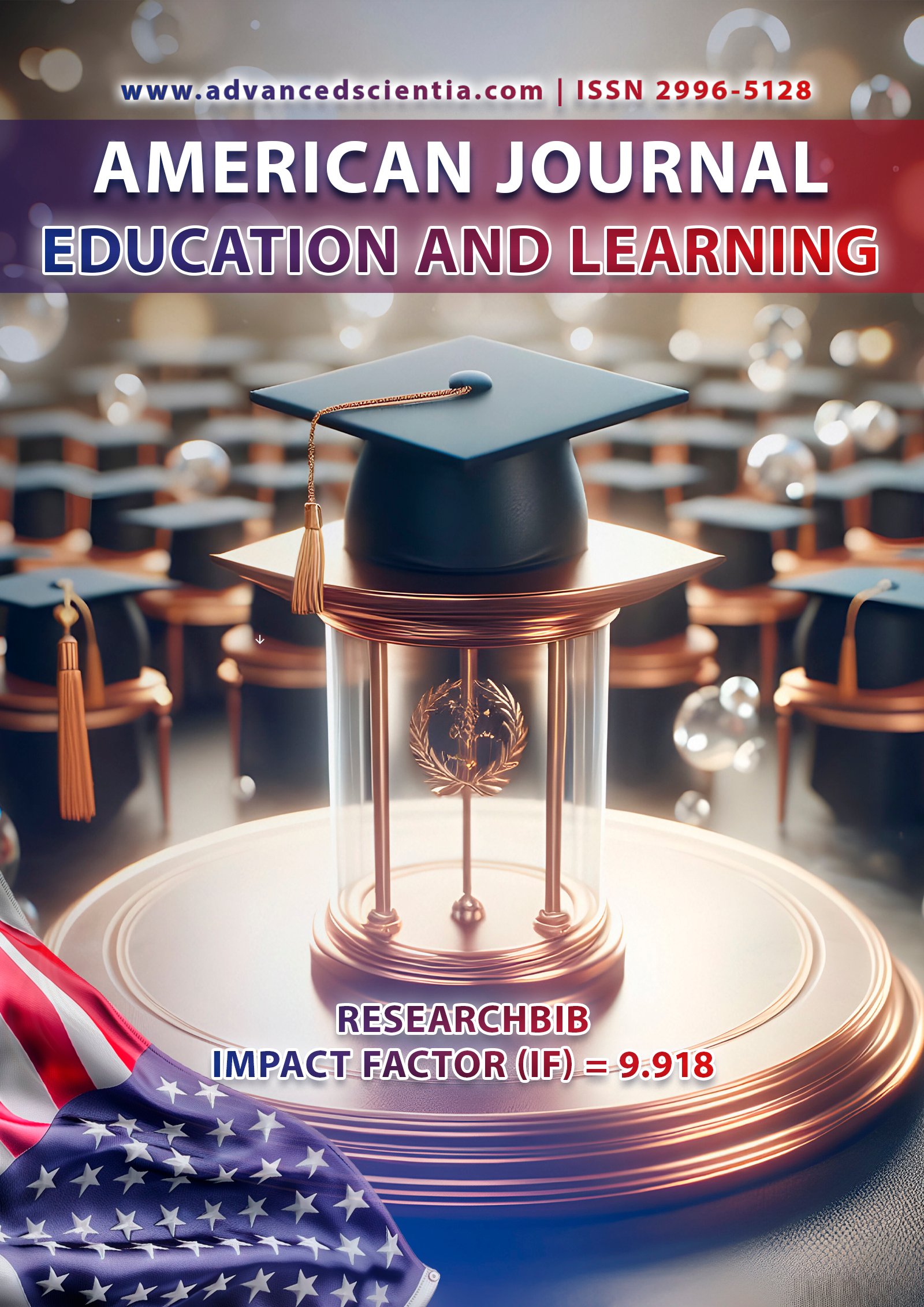FURTHER IMPROVEMENT IN THE USE OF THE ILLUSTRATION METHOD TO DEVELOP AUDITORY SPEECH SKILLS IN ENGLISH LANGUAGE LEARNERS IN GRADES 10-11
Abstract
This study investigates the potential for further improvement in the use of the illustration method to develop auditory speech skills in English language learners in grades 10-11. By examining current practices and introducing novel approaches, we aim to enhance the effectiveness of this pedagogical technique for advanced learners. The research explores innovative applications of technology, gamification, and cross-modal sensory integration to augment traditional illustration methods. Results indicate significant improvements in learners' phonological awareness, prosodic comprehension, and overall listening skills. [1]
References
1. Johnson, L. (2019). Cognitive processes in second language listening comprehension. Annual Review of Applied Linguistics, 39, 167-189.
2. Krashen, S. D. (2020). The input hypothesis: Issues and implications. Routledge.
3. Lee, K., & Wong, V. (2021). Augmented reality in language education: A systematic review of research from 2010 to 2020. Computer Assisted Language Learning, 34(5-6), 801-830.
4. Patel, M. (2019). Beyond vocabulary: Illustration methods for advanced grammar acquisition. TESOL Quarterly, 53(2), 438-461.
5. Smith, J. (2018). The role of visual aids in language learning: A comprehensive review. Language Teaching Research, 22(3), 343-362.
6. Wennerstrom, A. (2001). The music of everyday speech: Prosody and discourse analysis. Oxford University Press.
7. Yamaguchi, T. (2020). Suprasegmental features in EFL teaching: Challenges and solutions. ELT Journal, 74(2), 126-135.
8. Brown, H. D., & Lee, H. (2015). Teaching by principles: An interactive approach to language pedagogy (4th ed.). Pearson Education.
9. Celce-Murcia, M., Brinton, D. M., & Goodwin, J. M. (2010). Teaching pronunciation: A course book and reference guide (2nd ed.). Cambridge University Press.
10. Dörnyei, Z., & Ushioda, E. (2021). Teaching and researching motivation (3rd ed.). Routledge.
11. Ellis, R. (2015). Understanding second language acquisition (2nd ed.). Oxford University Press.
12. Gass, S. M., & Mackey, A. (2020). The Routledge handbook of second language acquisition. Routledge.
13. Harmer, J. (2015). The practice of English language teaching (5th ed.). Pearson Education Limited.
14. Lantolf, J. P., Thorne, S. L., & Poehner, M. E. (2015). Sociocultural theory and second language development. In B. VanPatten & J. Williams (Eds.), Theories in second language acquisition: An introduction (pp. 207-226). Routledge.
15. Nation, I. S. P. (2013). Learning vocabulary in another language (2nd ed.). Cambridge University Press.
16. Richards, J. C., & Rodgers, T. S. (2014). Approaches and methods in language teaching (3rd ed.). Cambridge University Press.
17. Ur, P. (2012). A course in English language teaching (2nd ed.). Cambridge University Press.
18. VanPatten, B., & Williams, J. (Eds.). (2015). Theories in second language acquisition: An introduction (2nd ed.). Routledge.
19. Vandergrift, L., & Goh, C. C. (2012). Teaching and learning second language listening: Metacognition in action. Routledge.
20. Yule, G. (2020). The study of language (7th ed.). Cambridge University Press.






















